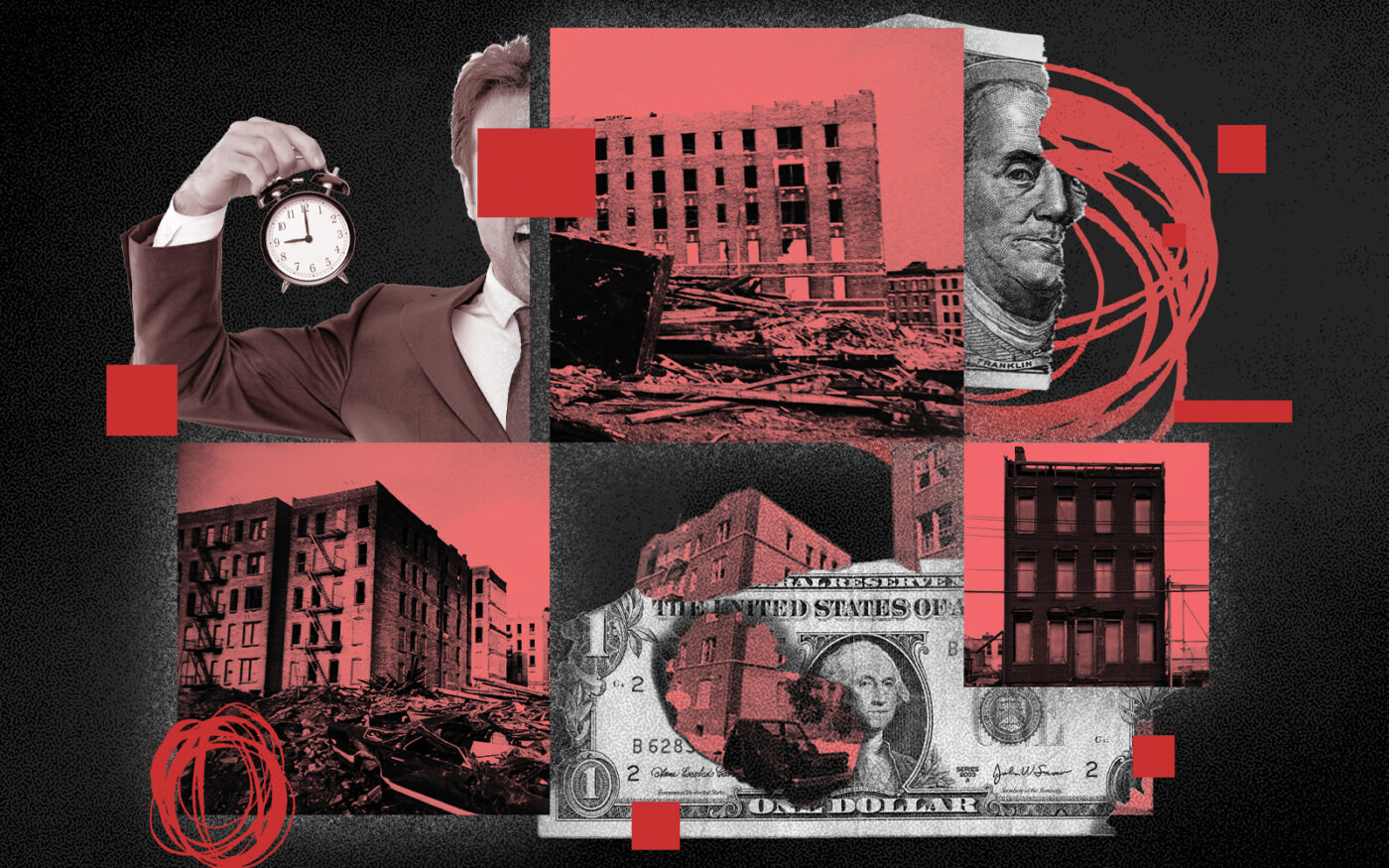Distress in rent-stabilized buildings rises to surface
More signs emerge that law aimed at bad actors has put entire asset class at risk

When Sugar Hill Capital Partners was hit with a wave of foreclosure filings late last year, the media’s narrative was that the firm had it coming.
Sugar Hill had picked up the properties six months before New York unexpectedly turned rent stabilization upside down in 2019, severing routes to profitability for many buildings. Tenant lobbyists championed the reform as essential to stopping landlords from forcing out tenants and jacking up rents.
Three years later, when the foreclosure actions began against Sugar Hill, the firm was coupled in with the bad actors. Vice said it was known for “aggressive attempts to deregulate,” and speculated that it took on debt it could only repay by making huge rent hikes.
New York City Comptroller Brad Lander told Sugar Hill tenants that the owners, “in their greed, got out over their skis.” Gothamist reported that Sugar Hill had racked up thousands of violations at the buildings.
A closer look, however, shows that Sugar Hill wasn’t the predatory, overleveraged landlord the law aimed to stop. It was just unable to operate under the new rules. And it wasn’t alone.
Sugar Hill, which is led by David Schwartz and Margaret Grossman, had financed 36 building purchases cautiously, borrowing $100 million at an average loan-to-value ratio of 56 percent — well below the norm of 65 to 75 percent. Yet the loans fell into delinquency, Freddie Mac reported in June.
All but two of the buildings are entirely rent-stabilized. It’s not clear if deregulation was Sugar Hill’s plan, but in any case, the 2019 reform prevented it. More damaging to the firm, though, was that the law prevented rent hikes of any significance to pay for repairs and upgrades, which the portfolio desperately needed.
Sugar Hill did not comment for this story, but a principal had told The Real Deal when the rent law passed that the buildings were largely in disrepair, and without the ability to raise rents it wouldn’t be able to afford fixes.
“I think they were really genuinely hoping to buy buildings in areas where eventually they’d be able to fix them up and sell them at a higher value,” said Jay Martin, head of the landlord group Community Housing Improvement Program.
“Sometimes I price them so low that I feel, ‘Okay, it has to sell.’ But I’m still not getting any bids.”
“They wanted to invest in them to sell them in 10 to 15 years as a better-quality housing product,” Martin added. “And now, the numbers just don’t work to do that.”
The Sugar Hill foreclosure cases may be the proverbial tip of the iceberg. Brokers say distressed sales of rent-stabilized buildings have ramped up, and their owners will struggle to refinance as a historic number of multifamily loans mature over the next few years.
The current trajectory is unsustainable, with expenses outpacing rent revenue and politicians unwilling to modify a law that critics say painted the industry with a broad brush. The color: blood red.
Warning signs
Landlords declared the rent law a catastrophe from the moment it passed. They predicted it would cause the housing stock to deteriorate and plunge buildings into distress.
For a few years, it seemed the industry had cried wolf. Few signs emerged that the market was reeling. The owners who did go bust had been negligent and disreputable, validating legislators’ rationale for tightening policy.
But the red flags were there.
Covid sank rent rolls for more than a year, and the city’s Rent Guidelines Board froze stabilized rents for 18 months. Landlords’ expenses ballooned as inflation swept across the economy. The Federal Reserve, in turn, aggressively raised interest rates, squeezing owners who had floating-rate or expiring mortgages.
“If the costs are going up and the income stream is substantially reduced, that’s going to put a lot of folks underwater or close to it,” real estate attorney Sherwin Belkin said. New York City has about 900,000 rent-stabilized apartments.
Late last year, brokers saw cracks in the dam. Stabilized owners were trying to unload distressed buildings, and some properties were trading at hefty discounts to deals done just a few years before.
No buyers in sight
Fast-forward six months, and conditions are rapidly deteriorating. Lev Mavashev, founder of investment sales brokerage Alpha Realty, said he’s seen an influx of owners trying to sell insolvent properties, but no buyers.
“Sometimes I even price them so low that I feel like, ‘Okay, it has to sell,’” he added. “But I’m still not getting any bids.”
The only buildings selling are large ones, brokers say, and often at a loss. Across the board, valuations of stabilized buildings have plummeted 30 percent, landlords estimate.
“In some cases, the buildings will be worth less than the debt,” said Shimon Shkury, founder of brokerage Ariel Property Advisors.
In April, Taconic Partners and Clarion Partners sold a 14-building Bronx portfolio for $60 million, nearly 40 percent less than they paid for it in 2018. In June, Fairstead let the Dunbar Apartments in Harlem go for $86.75 million, just enough to cover the portfolio’s $86 million adjustable-rate loan.
Neither firm responded to requests for comment.
Defaults pile up
TRD examined court records and found $161 million in foreclosures on rent-stabilized buildings in New York City this year. For every loan in litigation, owners say, dozens more are in default.
City Skyline Realty’s $10 million mortgage at 2710 Morris Avenue in the Bronx, for example, is in foreclosure. But the owner has at least $76 million in delinquent debt, Freddie Mac data shows. Foreclosure filings against two more City Skyline buildings hit court records just before Labor Day weekend. Records from late 2021 to mid 2022 show that cash flow was barely covering debt payments.
City Skyline did not respond to a request for comment.
It’s likely that some distressed owners will be able to delay foreclosure, at least for a few more years. “I think it depends on the borrower more than anything else,” Shkury said.
“In some cases, the buildings will be worth less than the debt.”
If borrowers kick in more capital, a lender may extend a loan or offer an interest-only repayment plan, he said. But the government agencies behind a number of loans don’t have the same appetite for workouts.
Mavashev has been trying to sell 735 East 182nd Street, a fully stabilized building in the Bronx that he had sold to the owner just a few years ago.
“That’s an agency loan,” Mavashev said. “I’m trying to talk to servicers, I’m trying to let them know, ‘Hey, we’re marketing this; here’s the bids we’re getting.’ But they don’t seem to be cooperative.”
The clock is ticking. A foreclosure suit was filed on the building in June.
“Nightmare scenario”
The industry is bracing for the worst.
“The question is, Are the banks going to take back the buildings or will the buildings go into in rem foreclosure, where the city takes over?” Belkin said. “If either of these things happen, you end up with a housing stock that does not get attended to, and that has both short- and long-term negative ramifications for the city.”
Multiple sources pointed to the urban decay of the 1970s and ’80s as a precedent. In that era, inflation shot up and landlords abandoned buildings, leaving the city to pick up the pieces.
“That’s the nightmare scenario,” said Jordan Barowitz, founder of an eponymous advisory firm and former Durst Organization spokesperson. “But it’s hard not to see it going south, because looking at the data, there’s no reason to think the situation is improving.”
The consultant pointed to a Rent Guidelines Board report showing that the share of distressed properties in 2021 was 9 percent, the highest since the financial crisis.
Buildings with enough free-market units to subsidize rent-stabilized ones are generally in good shape. But with further deregulation now largely impossible, the only salvation for distressed owners would be a rollback of the rent law, insiders say.
The few buyers of rent-stabilized buildings are banking on the political pendulum eventually swinging back. Many are prepared to wait years, even decades.
Another long shot is a lawsuit by Martin’s group and the Rent Stabilization Association. The landlord organizations are waiting for the U.S. Supreme Court to decide if it will hear the case. If they win it, the state legislature would still need to reshape the law.
In the immediate future, however, the state may devalue buildings further. A pair of bills awaiting Gov. Kathy Hochul’s signature would limit rents on combined apartments and allow for large judgments for tenants who were overcharged years ago.
The latter could further complicate refinancings.
“Anytime there’s litigation, anytime there’s uncertainty, it’s not something that lenders really want,” said Zachary Rothken, an attorney who handles rent-stabilization cases.
The effects of all of these forces will topple bad landlords and responsible owners alike, observers said. In the next few years, brokers expect owners with any remaining equity to get out before lenders come calling.
“I don’t think that’s what the legislature intended,” Shkury said, “but I think that’s part of what’s going to happen.”
The result may be the exodus of mom-and-pop landlords the industry warned of four years back.
“I know one owner in particular who was in the business for 60 years, two generations, who was selling just to cover their loans,” Martin said. “Ten-building portfolio, walked away with nothing.”




